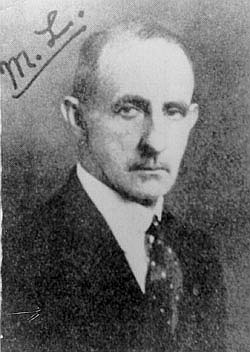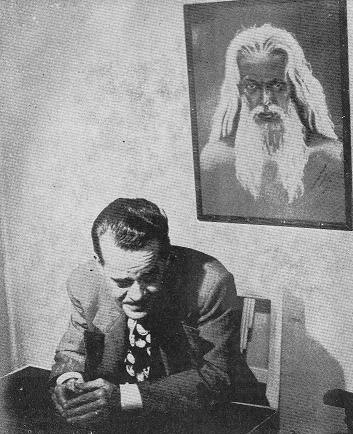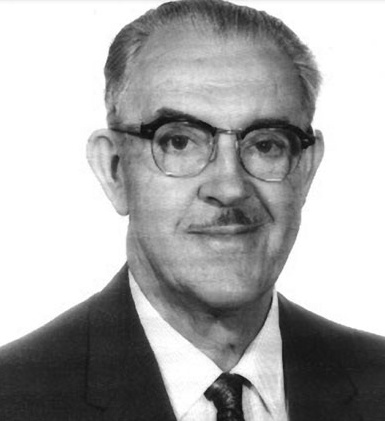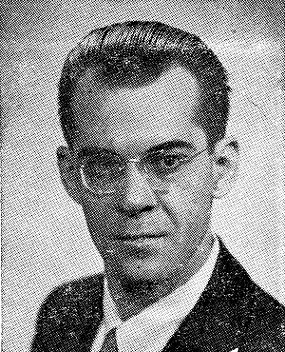
"And once again, as to the in-and-out of the Round Robin: it's the facts we're after. We believe every fact is a child of God. We don't care where it was born, or who nourished and cherished it; but we're interested in your reasons for accepting it, and for thinking it maybe means this-or-that. We quote Gregory, that 'in science there is no finality, there should therefore be no dogmatism' - and also Strindberg, who wrote that the whole business of man is 'not to turn his back upon the Light.' This Light may be a poor thing, but our business is to make the best of it, try to feed and bright it, to make it shine into dark corners."Meade Layne in the first issue of the BSRA's Round Robin, February 1945.
In the months preceding the end of hostilities in the Second World War, teacher and academic Meade Layne joined with Max Freedom Long and others to form an association of spiritualists and parapsychologists, New Thought writers and Theosophical thinkers, in Southern California. They called their field of research "the borderlands" of science, those murky areas where quanta overlap with spirit, where changes in consciousness force the very essence of being to be questioned. The goal was to liberally study, review, and report on the discarded or uncommon strands of science and philosophy, often relying on unorthodox means and sources.
Their methods were starkly different than those adhering to a conventional scientific praxis, holding in aspiration a higher spiritual science, one more open to unproved conceptions and wilder fancies than might be considered reasonable in polite company. There was a receptivity to "practical" occultism, Yoga, and Qabalistic technique, and other similar forms, leading way to acceptance of spirit channelling - which was to be one of their main sources of information on a variety of problems - and the ability of learned associates to detect fine forces and vital energies through a variety of subtle modes.
They were Borderland Sciences Research Associates, and their legacy is not forgot, near 70 years later.
Meade Layne

Our founder and first director, Meade Layne (September 8, 1882 - May 12, 1961), was, by his own accounting, "not a scientist or mathematician", but "an academician who [...] strayed into borderland sciences and psychic research."
In surveying that academic career, we find Layne completed his English masters at the University of Southern California (B.A., 1909; M.A., 1911), and further engaged himself in graduate studies of philosophy at the University of Oregon, Eugene (1926). Through the 1920s and into the 30s, he worked a series of different teaching jobs, moving with his wife, Gladys Hosler, and their family all across the United States, including posts at Illinois Wesleyan University and Florida Southern College.
Between his varied teaching assignments and other careers, Layne contributed papers and research notes to a variety of parapsychology, spiritualist, and occult journals that were active in the early part of the twentieth century. Further, he penned quantities of poetic verse, including at least one chapbook: his affection for the poetical and literary would feature often in his nearly fifteen year editorial directorship of the Round Robin.
As the years progressed, Layne developed a reputation as a competent investigator of esoteric matters, possessed of deep knowledge - in no small part owing to his academic pedigree - and great openness to new understandings. He was avowed as an exemplar student of Qabalah and learned much from mentors the likes of Frater Achad, and contemporaries including Frater Damon and Israel Regardie. This active pursuit of occult wisdom directly influenced all of the work that would flow out from his association, including the Etheric Interpretation of the Flying Saucers that Layne is perhaps best known for today.
His introduction to the medium Mark Probert and the launch of his Round Robin in the mid-forties proved catalysts for a new phase in Layne's life: that of a public figure, invoked as an authority and voice for a certain class of spiritualist saucerians and their allies. It was a role he filled more than capably from the first issues of his Round Robin and Flying Rolls through to the end of his tenure as director in the last years of his life.
Reflecting on his times and his work, we believe it fair to suggest that Layne was situated at a perfect confluence of forces, and that he navigated these with considered coolness and deftness of wit, leaving behind him a potent legacy that demands to be tapped by those who sincerely seek after the truths of spirit. All students - occult, saucerian, or otherwise - will readily find something worth their while in exploring it.
- "The Ether-ship Mystery and Its Solution: A Booklet for Public Information" (1950)
- "The Ether of Space: The Concept of the Ether(s) and Its Relation to the Phenomena of the Aeroforms, a Compendium" (1953)
- "The Coming of the Guardians: An Interpretation of the Flying Saucers as Given from the Other Side of Life" (1954)
- "Retro Me, or Psychic Self-Defence"
Our collection of reproduced "Round Robin" back issues remain available
through our Borderland Sciences Research Catalog.
Mark Probert

The "Telegnostic from San Diego" Mark Probert (February 5, 1907 - February 22, 1969) was the main trance medium working with the BSRA in the early days, acting as the channel of the Inner Circle (or Kethra E Da, as it is called in the Yuga language of the Circle's leader, E Yada Di Shi'ite). Records of Probert's seances were first put to paper by Associate Harriet P. Foster and circulated by Meade Layne as part of the BSRA's "Round Robin", forming the core of the earliest solutions offered for the Ether Ship Mystery and a variety of other borderland research projects.
- "The Magic Bag: A Manuscript Dictated Clairaudiently to Mark Probert by Members of the Inner Circle" (1963)
- "Yada Speaks, Or the 500,000 Year Old Wisdom of E Yada Di Shiite (She-He'Tee)" (1979)
Max Freedom Long

Max Freedom Long (October 26, 1890 - September 23, 1971) was a contributing editor of the Round Robin and BSRA co-director with Meade Layne for several years, his efforts primarily focused on what he called Huna, his personal interpretation of certain magical and esoteric practices native to Hawaii.
• "The Secret Science at Work: New Light on Prayer" (1953)
• "The Huna Code in Religions: A Report on the Rediscovered Mystery Teachings Underlying Christianity, Yoga and Buddhism" (1956)
Vincent Gaddis

The Forteana author Vincent Hayes Gaddis (December 28, 1913 - February 26, 1997) was an early associate and a contributing editor for the Round Robin. He is popularly known today for his coining of the term "Bermuda Triangle" and his related writings on unusual phenomena and "damned" facts.
- "Invisible Horizons: True Mysteries of the Sea" (1956)
- "Mysterious Fires and Lights" (1967, rp 1991)
David D. Dagmar
Hollywood publisher David D. Dagmar joined as a contributing editor of the Round Robin after a brief run publishing "Maxin 92" (1945) and "Maxin 96" (1946), his Shaver Mystery and occult zine.
Associate Contributors
- Millen Cooke
- Harriet P. Foster
- John A. Hilliard
- Edward S. Schultz
- William G. Randall
- Fr. F.G.H.
- Harold S. W. Chibbett
- Verne L. Cameron
- George W. Wallace
- Don Green
- Columba Krebs
- Rolf Telano,
a.k.a. Ralph M. Holland - Gerald Light
- George S. Heppner
- R. D. Carse
- Gaston Burridge
- Estella DeFord Graham
- Mark Gallert
- Patricia Sherrick
- Wayne Trubshaw
- Lindy Millard
- David Rudman
- G.C. Wilson
- Vivian Brinkley
- H. T. Wilkins
- Victor M. Waage
- Carl F. Krafft
- O. Reynolds
- E. G. Reed
- Alice Winston
- Trevor James (Constable)
- Howard D. Clark
- Frank Gerard
- Riley H. Crabb (who would go on to become the director in 1959, transforming the Foundation into what it is today)
- and many, many others.
